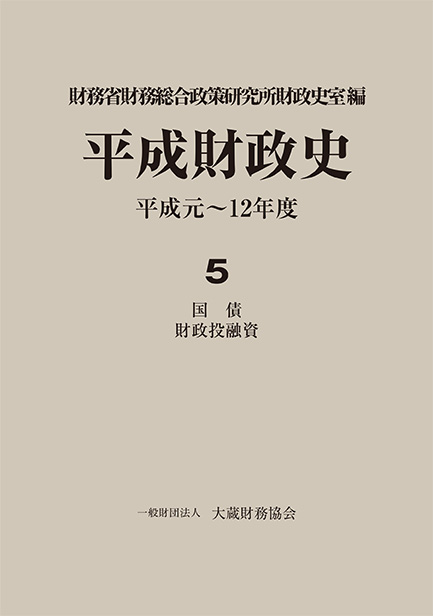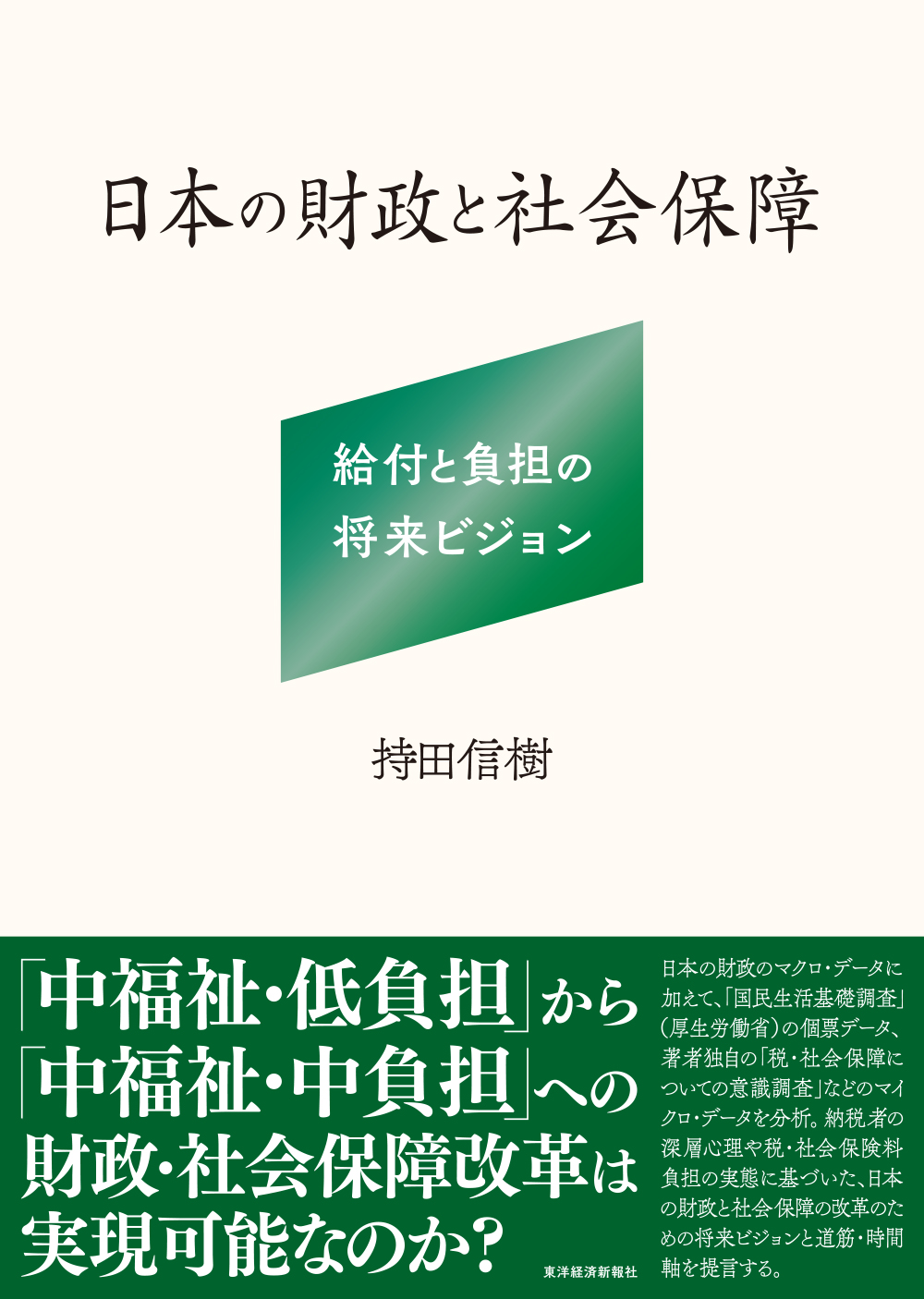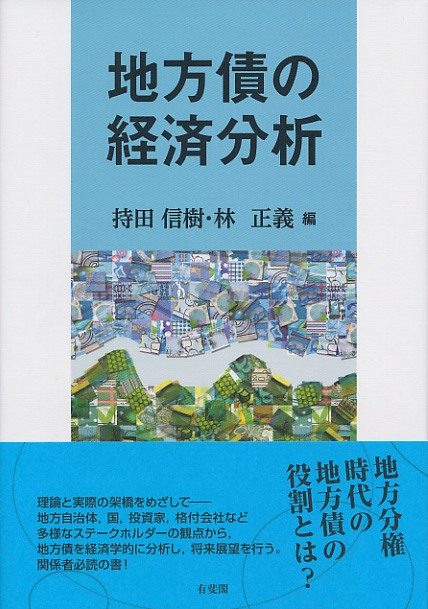
Title
The Fiscal History of the Heisei Period: From FY 1989 to FY 2000 Dai 5 kan: Kokusai-Zaiseitoyushi (Volume5. Japanese Government Bonds and Fiscal Investments and Loans)
Size
596 pages, A5 format
Language
Japanese
Released
December 17, 2015
ISBN
978-4-7547-2278-4
Published by
Okura Zaimu Kyokai
Book Info
See Book Availability at Library
Japanese Page
To date, Japan’s Ministry of Finance has recorded the history of the Ministry’s activities from the beginning of the Meiji era, when it was established, to the end of the Showa period and has published a series of books on the fiscal history of Japan. There have been various publications such as “The Fiscal History of the Meiji period,” “The Fiscal History of the Meiji and Taisho period,” and “The Fiscal History of the Showa Period: From the End of World War II to the Peace Treaty.” There are virtually no other examples in the world of this type of historical recording and publication of fiscal and monetary policies by fiscal authorities since the establishment of modern nations. This has become a valuable cultural asset of which Japan should be proud. This book has maintained this tradition rather than dismissing it and is published as part of the 7th series (12 volumes in total) that has been planned and implemented to focus on the fiscal policy activities from FY 1989 to FY 2000.
The 12-year period covered by the book encompasses the time when there was a shift from the Showa period to the Heisei period, including the groundbreaking, historic changing of the Japanese name of the Ministry of Finance as part of the wider reorganization of the central government ministries and agencies. This is why this juncture is considered appropriate for discussion in the context of the history of this Ministry. This period also coincided with the so-called bubble economy and its subsequent collapse during a time of global upheaval, which also witnessed the end of the East–West Cold War and the sudden rise of globalization. It was also a period of ensuing recession, financial crises, and fiscal difficulties; the period was aptly named the “lost decade.” Further, there were changes in the political arena such as the shift from single-party rule to coalitions. Thus, this period indeed witnessed multiple significant events.
This book provides a detailed and accurate historical record of the major events that were recorded by the Ministry of Finance’s Financial Bureau regarding their administrative operations related to Japanese government bonds (JGBs) and the fiscal investment and loan programs during that period. The book is based on original source materials maintained by the Ministry of Finance and other institutions. We hope this book will not only serve as an administrative reference but also be useful for academic research. Therefore, we have strived to accurately record, to the best of our ability, not only the policies that were ultimately implemented but also the policy-making processes.
It should become quickly apparent on reading this book that JGBs, fiscal investments, and loans played important roles during the recession in the Heisei period, particularly in relation to the Ministry of Finance’s Financial Bureau. The book will illustrate and how the Bureau deliberated and made full use of its wisdom and ingenuity to formulate plans. Part 1 -“Japanese Government Bonds”- discusses in detail the process wherein a substantial number of JGBs were issued to bring the recession under control. At the time, appropriate JGB management policies were required, which included the diversification of JGB types and the development of JGB derivative trading, such as futures and options. Such policies are expounded in this book.
Part 2 -“Fiscal Investment and Loan”- provides a detailed record, based on original source materials, of the role of fiscal investments and loans, or the “second budget,” during the recession in the Heisei period. We also provide a historical record of the reform of the fiscal investment and loan programs that were finalized in 2001 by elucidating, for the first time, their policy-making processes. Reforms of the fiscal investment and loan programs commenced at the end of the Showa period, but radical reforms were only implemented in April 2001. This was an epoch-making event in the postwar history of the fiscal policy and should serve as an important reference not only in the administrative sphere but also in the academic research field.
(Written by MOCHIDA Nobuki, Professor, Graduate School of Economics / 2017)



 Find a book
Find a book



